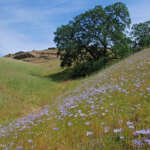The Ulysses Butterfly:
Papilio ulysses, the Ulysses butterfly (also commonly known as the Blue Emperor), is a large swallowtail butterfly of Australia, Indonesia, Papua New Guinea and the Solomon Islands. The Ulysses butterfly, named after the Greek hero from the epic Odyssey. It’s striking blue colors make it one of the most attractive of all butterflies. This butterfly is used as an emblem for tourism in Queensland, Australia. There are 16 subspecies as known till now of the Ulysses butterfly.
They are generally found in tropical rainforests and suburban areas. They are not extinct as of now but are not in very large numbers. In the past, this butterfly had been threatened but planting pink flowered doughwood has increased its numbers.
Ulysses Butterfly Interesting Facts:
- Ulysses butterfly is a type of butterfly, which is an arthropod and it’s lifespan is about four weeks. Its size varies depending on subspecies, but the wingspan is about 10.5 cm (4.1 in) in Queensland. It weighs only 0.017 oz (0.5 grams).
- It is a beautiful bright blue butterfly. The upper part of the wings looks iridescent blue while the lower part seems more of black and brown. The colours are produced by the microscopic structure of the scales, a phenomenon called structural colouration. They are also called ‘blue mountain’ due to their extraordinary blue color especially on their wings. The Ulysses Butterfly caterpillar is green in color.
- The female of the species is different from the male in that she has little crescents of blue in the back, upside sections of her hindwings, where there is only black for males. They communicate through pheromones and also by flapping their wings.
- The blue Ulysses butterfly is mostly a solitary creature. But, when it migrates it can travel in massive packs.
- Ulysses butterflies mate like most other varieties of butterflies. The breeding and courtship process involves aerial activity and pheromones. Male Ulysses butterflies tend to perch on blue colored objects in the hope of finding the female. Copulation occurs from tail to tail and may last for over an hour.
- The most liked food of the Ulysses larvae are the food plants known as the melicope elleryana (euodia). Reduction in the number of the Euodia trees, a tree heavily used for laying eggs and for leaves eaten by caterpillars, may threaten the survival of this butterfly. Females favour small trees up to 2 metres tall to lay their eggs. The larval food plants of this butterfly include kerosene wood, a variety of Citrus.
- They are famous for their dance in a morse code fashion delivered as per their mood. It is used as a tool by the butterfly to confuse the predators. The better they dance, the more possible it is for them to breed and live. They do this for two to four weeks, after which their wings tire out and the Ulysses butterfly life cycle comes to an end. They are known to be frantic flyers.
- Predators of the Ulysses butterfly are birds, snakes, flying foxes and frogs who find them due to their bright blue and black brown wings.
- Male Ulysses butterflies are known to be attracted to the blue crescents on the female’s wings, and as a result, may fly towards anything blue that it may spot.
- They are generally found in tropical rainforests and suburban areas. They are not extinct as of now but are not in very large numbers. In the past, this butterfly had been threatened but planting pink flowered doughwood has increased its numbers.
Other Articles
Next
February 5, 2022
Plant Kaffir Lily – Erakina
Previous
February 5, 2022






